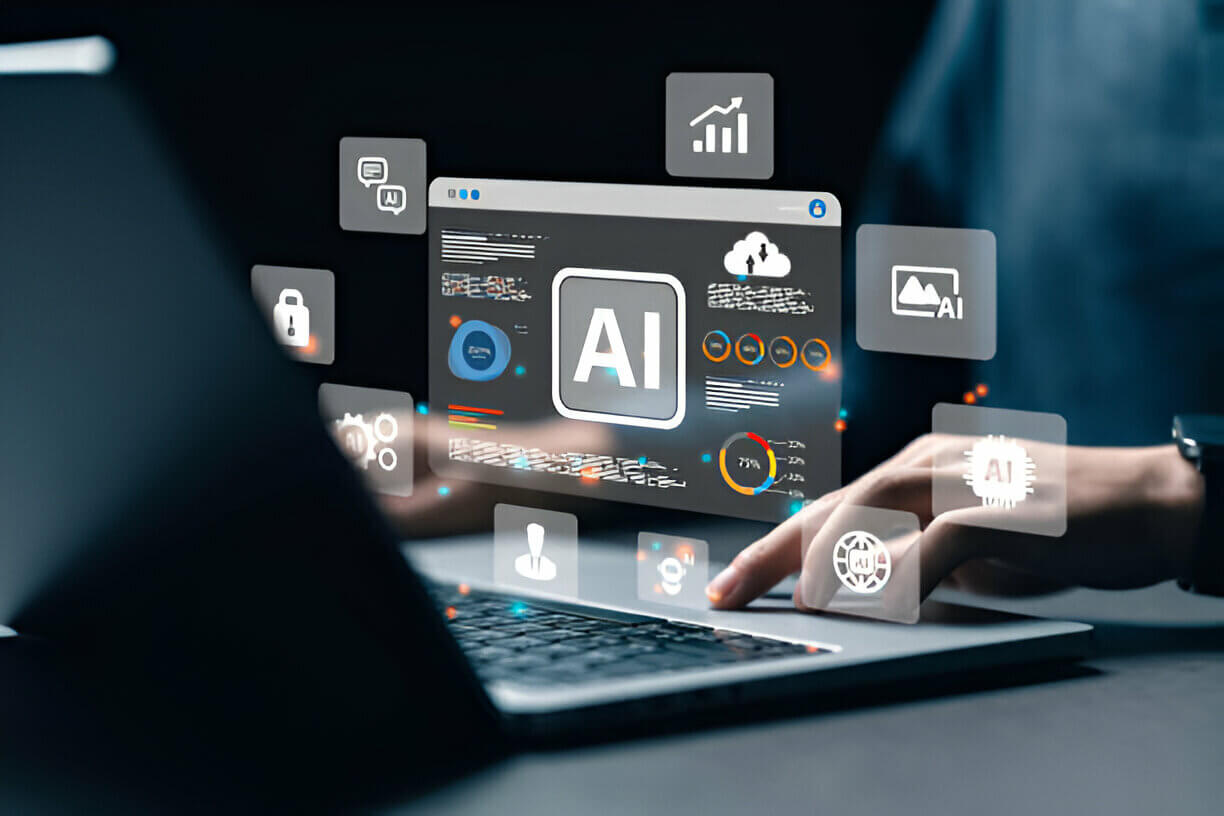As we stride further into the digital age, the evolution of wireless communication becomes increasingly central to our daily lives. Each new generation of wireless technology doesn’t just represent an improvement over its predecessor—it marks a complete transformation in how we connect, communicate, and interact with the world around us. While 5G is still rolling out across many parts of the globe, its successor—6G—is already generating immense excitement in the tech and telecom industries. With the promise of speeds and capabilities far beyond current standards, 6G is expected to usher in a new era of connectivity that will reshape society as we know it.
In this comprehensive blog post, we’ll delve into the technical, social, and economic aspects of 5G vs 6G, examining how these two generations differ, what each one enables, and why the future of connectivity depends on continued innovation.
Table of Contents
ToggleUnderstanding 5G: The Current Frontier
What is 5G?
5G is the fifth generation of mobile network technology, succeeding 4G LTE. It was designed to meet the increasing demands of mobile broadband applications, enable new use cases, and provide the infrastructure for the next phase of digital transformation. 5G aims to deliver enhanced mobile broadband (eMBB), ultra-reliable low-latency communication (URLLC), and massive machine-type communication (mMTC).
This new generation marks a dramatic improvement over its predecessor by providing better speed, lower latency, and more efficient support for a higher number of devices. The main goal of 5G is to support advanced use cases like autonomous driving, smart cities, industrial automation, and immersive entertainment.
Key Features of 5G
- Higher Speeds
- 5G can deliver speeds ranging from 100 Mbps to 10 Gbps, depending on the network conditions and spectrum used.
- These speeds enable high-definition video streaming, seamless video conferencing, and fast data transfer, dramatically improving user experience.
- Ultra-low Latency
- Latency, or the delay between sending and receiving data, can be as low as 1 millisecond in 5G networks.
- This is crucial for applications like remote surgery, autonomous vehicles, and real-time gaming where immediate feedback is essential.
- Massive Device Connectivity
- 5G supports up to 1 million devices per square kilometer, making it ideal for dense urban environments and large-scale IoT deployments.
- This capability paves the way for smart homes, smart grids, and fully connected smart cities.
- Network Slicing
- This feature allows network operators to create multiple virtual networks from a single physical network.
- Each slice can be customized to meet the specific needs of a particular application or user group.
- Enhanced Security and Efficiency
- 5G incorporates advanced encryption protocols and more efficient data handling, contributing to better battery life for devices and safer connections.
6G: The Next Leap Forward
What is 6G?
6G, or the sixth generation of wireless networks, is currently in the research and conceptual phase, with an anticipated launch around 2030. Unlike 5G, which is focused on connecting people and devices, 6G aims to connect intelligence—facilitating a seamless integration of the digital, physical, and biological worlds. It is expected to offer unprecedented performance in terms of speed, latency, bandwidth, and the ability to handle complex and dynamic network environments.
6G will go beyond just faster mobile communication. It will support applications that are not feasible with current technology, including holographic displays, immersive extended reality (XR), digital twins, and brain-computer interfaces. Moreover, it is designed to be inherently AI-driven, enabling smarter, self-optimizing networks.
Key Features of 6G
- Unprecedented Speeds
- 6G is projected to offer speeds up to 1 Terabit per second (Tbps).
- This would enable instant data transfers, 16K video streaming, and real-time sharing of massive datasets.
- Sub-Millisecond Latency
- With latency possibly dropping below 0.1 milliseconds, 6G will allow truly real-time interactions.
- This will be essential for applications such as remote robotics, tactile internet, and haptic feedback systems.
- Terahertz (THz) Frequency Bands
- 6G will operate in the 0.1 to 10 THz frequency bands, offering ultra-wide bandwidth for massive data throughput.
- However, THz waves also face propagation challenges, requiring innovative solutions for reliable coverage.
- AI-Driven Networking
- Unlike 5G’s AI-assisted approach, 6G networks will be AI-native—using machine learning for traffic prediction, resource allocation, anomaly detection, and more.
- This will result in highly adaptive and efficient network management.
- Advanced Sensing and Imaging
- 6G will incorporate radio-based sensing, enabling the network to detect physical objects and environmental changes.
- This feature will play a key role in security, health monitoring, and environmental awareness.
- Sustainability and Energy Efficiency
- 6G aims to meet ambitious sustainability goals by optimizing energy usage, employing green materials, and leveraging solar-powered base stations.
- The networks will be designed with carbon neutrality in mind.
Key Differences Between 5G and 6G
| Feature | 5G | 6G |
|---|---|---|
| Speed | Up to 10 Gbps | Up to 1 Tbps |
| Latency | ~1 ms | < 0.1 ms |
| Spectrum | Sub-6 GHz, mmWave | Terahertz (THz) |
| Devices Supported/km² | ~1 million | ~10 million |
| AI Integration | Partial (Assisted) | Full (Native) |
| Deployment Timeline | 2020–2025 | 2030+ |
| Core Applications | IoT, Smart Cities, AR/VR | Holograms, Digital Twins, Neural Interfaces |
| Network Slicing | Supported | Enhanced and Intelligent |
| Sustainability Focus | Moderate | Core Design Element |
Technological Foundations
5G Technologies
- Massive MIMO (Multiple Input Multiple Output): Boosts capacity and reliability by using multiple antennas.
- Millimeter Wave (mmWave): Provides high-speed data over short distances.
- Edge Computing: Processes data closer to the source, reducing latency.
- Network Function Virtualization (NFV): Virtualizes network services, making networks more flexible and scalable.
- Beamforming: Directs signals toward specific users for better efficiency.
6G Technologies
- Terahertz Communication: Offers ultra-high bandwidth but with propagation and coverage challenges.
- Intelligent Reflecting Surfaces (IRS): Used to manipulate electromagnetic waves and improve signal coverage.
- Quantum Communication: Ensures unbreakable encryption using quantum key distribution.
- Cell-Free Networks: Removes the concept of traditional cell boundaries, improving user experience.
- AI-Powered Network Orchestration: Uses deep learning to control network behavior dynamically.
- Brain-Computer Interfaces (BCIs): Enables direct interaction between the human brain and connected systems.
Applications of 5G and 6G
5G Applications
- Smart Cities: Connected infrastructure, smart traffic lights, real-time surveillance.
- Autonomous Vehicles: Low-latency communication for collision avoidance and navigation.
- Telemedicine: High-definition remote diagnostics and robotic surgery.
- AR/VR Entertainment: Immersive gaming and virtual events.
- Industrial IoT: Real-time control and monitoring of machines in smart factories.
6G Applications
- Holographic Communication: Life-sized, interactive holograms for meetings, education, and entertainment.
- Digital Twins: Real-time digital replicas of physical systems for predictive maintenance and simulation.
- Tactile Internet: Allows the transmission of touch sensations, useful for remote surgery, training, and robotics.
- Global Coverage: Integration of terrestrial and non-terrestrial networks (NTNs) including satellites and drones.
- Neural Interfaces: Hands-free device control via brain signals, enhancing accessibility and user experience.
Challenges and Considerations
5G Challenges
- High Infrastructure Costs: Especially in deploying small cells in dense urban areas.
- Regulatory Hurdles: Coordinating spectrum allocation among nations.
- Public Concerns: Misconceptions about radiation and health risks.
- Interoperability Issues: Integrating with legacy systems and devices.
6G Challenges
- Unproven Technologies: Many key components are still in early research.
- Energy Consumption: THz transmission requires innovative solutions to remain energy-efficient.
- Privacy Risks: Enhanced surveillance capabilities raise ethical questions.
- Global Inequality: Risk of exacerbating the digital divide between developed and developing regions.
Economic and Societal Impact
5G Economic Impact
- Boosts GDP: Projected to contribute over $13 trillion globally by 2035.
- Job Creation: Generates employment in telecom, software development, and IoT.
- Business Innovation: Enables new business models in logistics, healthcare, and entertainment.
6G Societal Transformation
- Industry Redefinition: Entire industries—like education, transportation, and healthcare—will transform.
- Hyper-Personalization: Services will be tailored in real-time based on individual preferences and behaviors.
- Environmental Monitoring: Real-time data on climate, pollution, and natural resources will support sustainability.
- Smart Governance: Governments will use 6G for efficient service delivery and public safety.
The Global Race for 6G
Nations are investing heavily in 6G R&D to gain an edge in the next wave of digital infrastructure:
- United States: The Next 6G Alliance is setting a national strategy for 6G leadership.
- China: Already launched experimental 6G satellites and holds numerous patents.
- South Korea: Planning to commercialize 6G by 2028.
- Europe: The Hexa-X initiative aims to position Europe as a leader in 6G development.
Leadership in 6G will confer strategic advantages in cybersecurity, economic competitiveness, and global influence.
Final Thoughts
The transition from 5G to 6G is not merely an evolution in wireless speed—it is a reimagining of what connectivity can and should be. 5G is laying the foundation for a world of connected devices and services, while 6G aims to blend the digital and physical into an intelligent, immersive continuum.
As 5G continues to roll out and reach maturity, the world is preparing for the next revolution. 6G promises to be more than a communication tool; it will be a transformative force for innovation, inclusivity, and intelligence.
The future is wireless, and it’s closer than you think.








